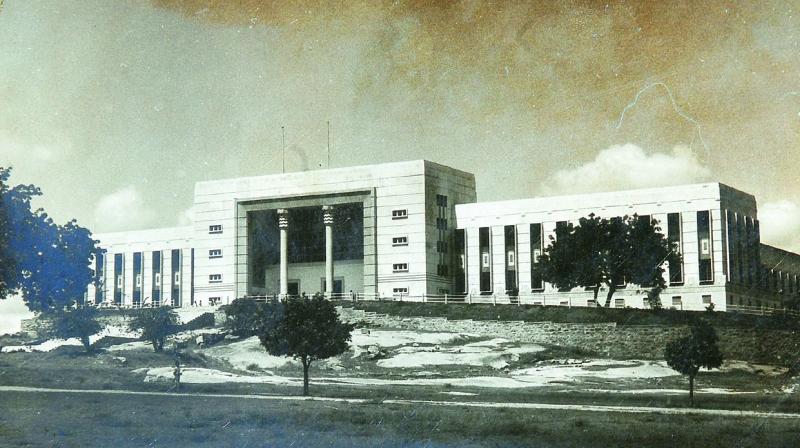War spend hit all-Granite Osmania University

Hyderabad: But for World War II, the entire Osmania University campus would have been an architectural masterpiece in granite like the famed Arts College Building, which was constructed of granite brought from Nalgonda.
Belgian architect Ernest Jasper designed the Arts College building as directed by Nizam VII, Mir Osman Ali Khan, in a mix of Qutb Shahi, Mughal and Hindu architectural styles, to create a secular 'Osmania architecture'. He was assisted by Nawab Zain Yar Jung and Syed Ali Raza of Hyderabad.
“Probably there was a cash crunch since the money was diverted to the war and costs were cut. Hence, only the Arts College building was constructed in pure granite while other campus buildings are made of brick, lime and mortar, and are only partly granite,” Mohd Safiullah, honorary managing trustee of the Deccan Heritage Trust told this newspaper.
Granite was the favourite building material of the Nizam, with the High Court, Mozamjahi Market, Mahabubiya Girls High School, Asifia Technical College and Osmania Technical College in Mint Compound, and Phattar Gatti Market all being constructed using granite during his rule from 1911 to 1948.
“The main reason for diverting from granite to less costly lime and mortar is the World War II, according to some members of the Nizam’s clan. Financial and other resources were diverted to the war. The Nizam was a strong ally of the British, hence he got the rare title of His Exalted Highness,” Mr Safiullah said.
Though Nizam VII inherited almost empty coffers, within a short period of time he reviv-ed the economy and constructed several public buildings and gardens which stand testimony to his vision even today.
He laid the foundation stone of the 164-room and 2.5 lakh square feet Arts College building on July 5, 1934 and inaugurated the building on December 4, 1939. The firman was issued in 1917.
The total cost was 36 lakh Osmania Sicca.Hyderabad saw major architectural changes during his reign. Sajjad Shahid, author of the book Asaf Jahi Architecture of Hyderabad says that Nawab Mir Osman Ali Khan’s ascension to the throne in 1911 “came at a time when the city was reeling under the after affects of twin calamities (the Musi floods of 1908 and the plague of 1911). The City Improvement Board (CIB) set up in 1912 was entrusted with formulating lasting solutions.”
The CIB made a conscious effort to develop a distinct architectural style, with European architects such as Vincent Esch and Earnest Jasper bringing in an element of modern planning.
Esch designed the Kacheguda Railway Station in 1914, the High Court in solid pink granite in 1916, City College in 1917-1918, Osmania Hospital in 1925, Moazam Jahi Market in 1935, the Unani Hospital, the HPS and the Jubilee Hall in 1936.

